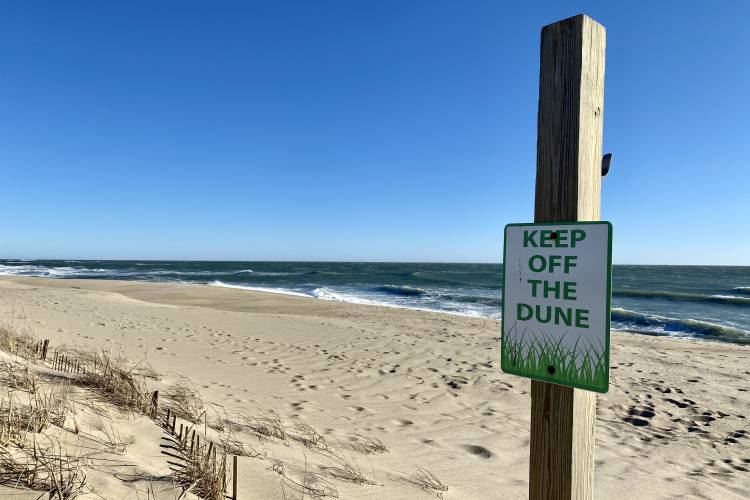Keeping Off The Dunes On Martha's Vineyard

Martha's Vineyard is a beautiful and unique island located off the coast of Massachusetts. Known for its idyllic beaches and stunning natural landscapes, the island is a popular destination for visitors from around the world. However, it's important to understand that much of the island's natural beauty is fragile and requires protection. One particularly important aspect of this protection is the dunes that line many of Martha's Vineyard's beaches.
Dunes are hills of sand that form along the coast and help to protect the land from erosion and flooding. They are formed by wind and wave action and are an important part of the coastal ecosystem. The dunes on Martha's Vineyard are particularly important because they are home to a number of rare and endangered species of plants and animals. These species rely on the dunes for their habitat and protection, and any disturbance to the dunes can have serious consequences for their survival.
In recognition of the importance of the dunes, the island has implemented strict rules and regulations regarding their use. Beachgoers are prohibited from walking or driving on the dunes, and are encouraged to stay on designated paths and boardwalks. This is because walking on the dunes can cause damage to the fragile ecosystem, including trampling the plants that provide shelter and food for the animals that live there.
Additionally, the dunes help to protect the island from erosion and flooding caused by storms and rising sea levels. By preventing beachgoers from walking on the dunes, the island is taking proactive steps to ensure the continued health and vitality of its coastal ecosystem, as well as protecting its natural beauty for future generations.
Finally, it is also important to know about ticks on Martha's Vineyard, as they can pose a serious health risk to both humans and animals. The most common tick species on the island is the black-legged tick, also known as the deer tick, which is known to transmit Lyme disease, anaplasmosis, and other illnesses.
Beach grass is a type of grass that grows on the sand dunes and helps to stabilize the dunes against erosion. It is an important part of the coastal ecosystem on Martha's Vineyard, and it is also an ideal habitat for ticks. Ticks use beach grass as a place to hide and wait for a host, such as a human or animal, to pass by. They climb up the beach grass blades and attach themselves to their host as it brushes past. The beach grass provides a moist, cool environment that helps ticks to survive and remain active even during the hottest parts of the summer. The good news is that they very rarely venture onto the sand.
To reduce the risk of tick bites, it's important to take precautions when spending time in areas where ticks are likely to be present, such as beach grassy areas. This includes wearing long-sleeved clothing, using insect repellent, and performing regular tick checks after spending time outdoors. It's also important to be aware of the symptoms of tick-borne illnesses and to seek medical attention if symptoms occur.
To help control the tick population on Martha's Vineyard, the island has implemented a number of measures, including the use of deer fencing and the application of tick-repelling chemicals. It's important to continue to monitor and address the tick population on the island to help protect both human health and the natural ecosystem.
In conclusion, the dunes on Martha's Vineyard are an essential component of the island's ecosystem and are critical for protecting its natural beauty and biodiversity. It is also one of the places that ticks like to live. For these reasons, It is very important for beachgoers to respect these protected areas and stay out of the dunes.
